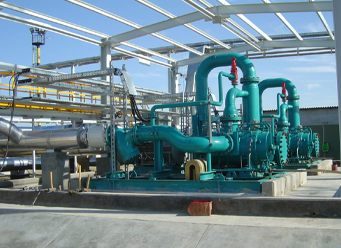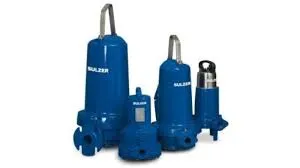TEL:
+86 13120555503
English
- Afrikaans
- Albanian
- Amharic
- Arabic
- Armenian
- Azerbaijani
- Basque
- Belarusian
- Bengali
- Bosnian
- Bulgarian
- Catalan
- Cebuano
- Corsican
- Croatian
- Czech
- Danish
- Dutch
- English
- Esperanto
- Estonian
- Finnish
- French
- Frisian
- Galician
- Georgian
- German
- Greek
- Gujarati
- Haitian Creole
- hausa
- hawaiian
- Hebrew
- Hindi
- Miao
- Hungarian
- Icelandic
- igbo
- Indonesian
- irish
- Italian
- Japanese
- Javanese
- Kannada
- kazakh
- Khmer
- Rwandese
- Korean
- Kurdish
- Kyrgyz
- Lao
- Latin
- Latvian
- Lithuanian
- Luxembourgish
- Macedonian
- Malgashi
- Malay
- Malayalam
- Maltese
- Maori
- Marathi
- Mongolian
- Myanmar
- Nepali
- Norwegian
- Norwegian
- Occitan
- Pashto
- Persian
- Polish
- Portuguese
- Punjabi
- Romanian
- Russian
- Samoan
- Scottish Gaelic
- Serbian
- Sesotho
- Shona
- Sindhi
- Sinhala
- Slovak
- Slovenian
- Somali
- Spanish
- Sundanese
- Swahili
- Swedish
- Tagalog
- Tajik
- Tamil
- Tatar
- Telugu
- Thai
- Turkish
- Turkmen
- Ukrainian
- Urdu
- Uighur
- Uzbek
- Vietnamese
- Welsh
- Bantu
- Yiddish
- Yoruba
- Zulu
Telephone: +86 13120555503
Email: frank@cypump.com
Feb . 01, 2025 03:11 Back to list
vertical slurry pumps
Slurry pumps are an essential component in the mining and dredging industries, among others, where they play a critical role in transporting solids-laden liquids. Selecting the right slurry pump specifications can significantly enhance operational efficiency, minimize downtime, and provide a longer lifespan for the equipment. Drawing from extensive experience, this article delves into the technical intricacies of slurry pump specifications, providing expertise that ensures authoritative and trustworthy guidance for professionals seeking optimal solutions.
Pump Power and Efficiency Assessing the pump power and overall efficiency is vital for cost-effective operations. Pump efficiency, while often overlooked, affects energy consumption and operational costs. Advanced hydraulic designs, incorporating features such as wide impeller passages, reduce blockages and enhance efficiency. Furthermore, selecting motors that match the required power ensures energy is not wasted, reducing operating costs and environmental impact. Sealing Mechanisms An often-underestimated component of slurry pump specification is the sealing mechanism, which prevents leakage and contamination. Packing seals, mechanical seals, and expeller seals are the main types available, each with specific applications' suitability. Mechanical seals, while costly, offer superior leakage prevention and durability, ideal for high-pressure or toxic slurries. Conversely, packing seals provide a cost-effective solution for less demanding applications but require frequent maintenance. Maintenance and Accessibility Finally, maintenance demands and accessibility should inform the choice of slurry pump specifications. Designs featuring easily removable liners and impellers facilitate straightforward maintenance, reducing downtime and labor costs. Pumps that allow for on-site repairs without specialized tools further enhance operational efficiency, leading to significant long-term savings. In conclusion, the precise selection of slurry pump specifications is intricately linked to the operational success and efficiency of industrial processes. By focusing on material construction, flow rate, head, particle size, concentration, power, sealing mechanisms, and maintenance factors, industry professionals can ensure that their equipment meets the rigorous demands of their specific applications, underscoring expertise, authoritativeness, and trustworthiness in decision-making.


Pump Power and Efficiency Assessing the pump power and overall efficiency is vital for cost-effective operations. Pump efficiency, while often overlooked, affects energy consumption and operational costs. Advanced hydraulic designs, incorporating features such as wide impeller passages, reduce blockages and enhance efficiency. Furthermore, selecting motors that match the required power ensures energy is not wasted, reducing operating costs and environmental impact. Sealing Mechanisms An often-underestimated component of slurry pump specification is the sealing mechanism, which prevents leakage and contamination. Packing seals, mechanical seals, and expeller seals are the main types available, each with specific applications' suitability. Mechanical seals, while costly, offer superior leakage prevention and durability, ideal for high-pressure or toxic slurries. Conversely, packing seals provide a cost-effective solution for less demanding applications but require frequent maintenance. Maintenance and Accessibility Finally, maintenance demands and accessibility should inform the choice of slurry pump specifications. Designs featuring easily removable liners and impellers facilitate straightforward maintenance, reducing downtime and labor costs. Pumps that allow for on-site repairs without specialized tools further enhance operational efficiency, leading to significant long-term savings. In conclusion, the precise selection of slurry pump specifications is intricately linked to the operational success and efficiency of industrial processes. By focusing on material construction, flow rate, head, particle size, concentration, power, sealing mechanisms, and maintenance factors, industry professionals can ensure that their equipment meets the rigorous demands of their specific applications, underscoring expertise, authoritativeness, and trustworthiness in decision-making.
Share
Latest news
-
Horizontal Split Case Pump with GPT-4 Turbo | High Efficiency
NewsAug.01,2025
-
ISG Series Pipeline Pump - Chi Yuan Pumps | High Efficiency, Durable Design
NewsAug.01,2025
-
Advanced Flue Gas Desulfurization Pump with GPT-4 Turbo | Durable & Efficient
NewsJul.31,2025
-
ISG Series Vertical Pipeline Pump - Chi Yuan Pumps | Advanced Hydraulic Design&Durable Construction
NewsJul.31,2025
-
ISG Series Vertical Pipeline Pump - Chi Yuan Pumps | Energy Efficient & Low Noise
NewsJul.31,2025
-
pipeline pump - Chi Yuan Pumps Co., LTD.|High Efficiency&Low Noise
NewsJul.31,2025










